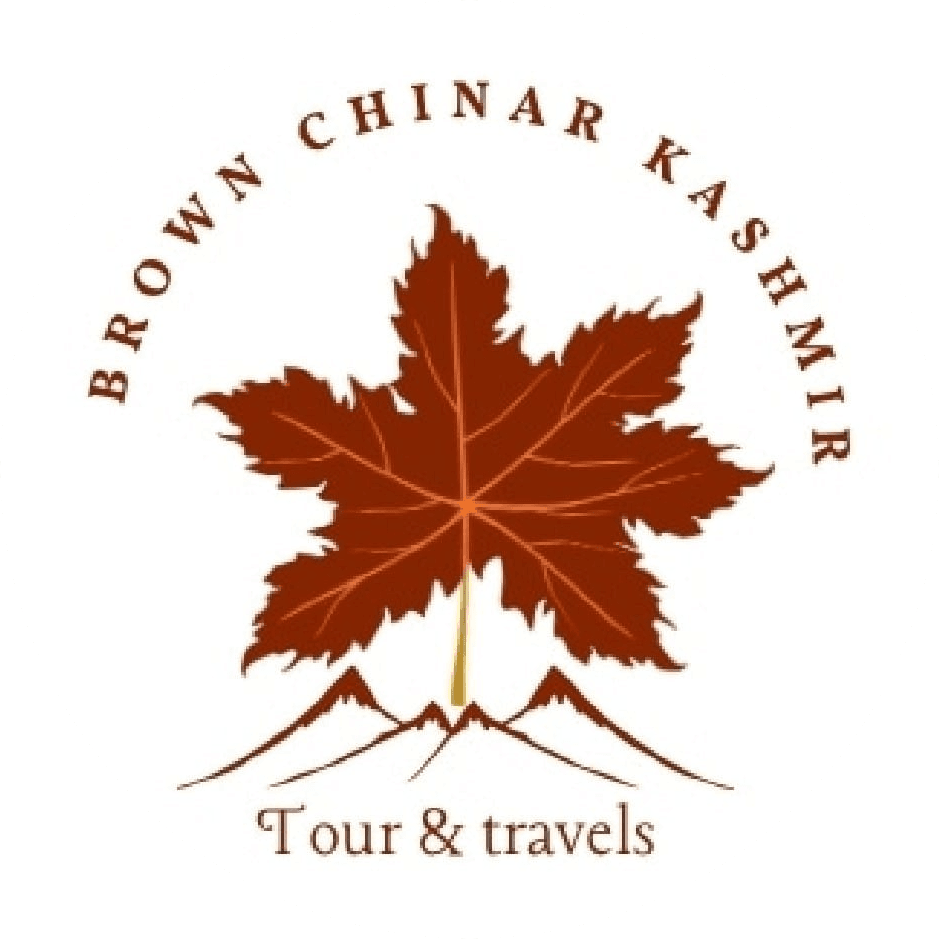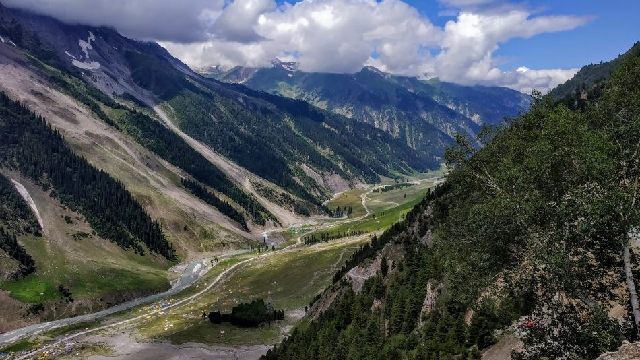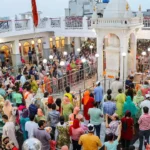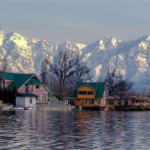Table of Contents
Toggle- Overview
- Geography and Location of Sindh Valley
- Cultural and Historical Importance of Sindh Valley
- How to Reach Sindh Valley
- Major Tourist Attractions of Sindh Valley
- Adventure Activities in Sindh Valley
- Best Time to Visit Sindh Valley
- Accommodation in Sindh Valley
- Conclusion: Why Sindh Valley is a Must-Visit Destination
- How to book Sindh Valley tour online?
- People Also Ask
- What is Sindh Valley in Kashmir?
- Where is Sindh Valley located?
- What is the best time to visit Sindh Valley?
- How do I reach Sindh Valley in Kashmir?
- What are the major attractions in Sindh Valley?
- What is Sonamarg?
- Is Sindh Valley a good place for trekking?
- How far is Sindh Valley from Srinagar?
- What activities can I do in Sindh Valley?
- What is the Sindh River?
- Is Sindh Valley safe for tourists?
- What is the weather like in Sindh Valley?
- Can I camp in Sindh Valley?
- Are there any hotels in Sindh Valley?
- What is the Gadsar Lake Trek?
- How long does it take to trek to Thajiwas Glacier?
- What is the Sonamarg to Krishansar Lake Trek?
- Can I visit Sindh Valley in winter?
- What is the culture of Sindh Valley?
- Are there any temples or religious sites in Sindh Valley?
- What is the best way to explore Sindh Valley?
- What wildlife can be found in Sindh Valley?
- Is Sindh Valley a good place for fishing?
- How can I get a permit to visit Sindh Valley?
- What are the local foods to try in Sindh Valley?
- Inquiry Form
Overview
This region often known as the “Paradise on Earth,” holds nature, culture, and history perfectly integrated within one another. And so it proves to be as this land invites huge throngs in spots such as Srinagar, Gulmarg, and Pahalgam; but hidden amidst all these lovelies still awaits its rediscovery from unseasoned eyes like the serene treasure called the valley of Sindh. The Sindh Valley is that valley located right in the center of Kashmir, which possesses some of the most breathtaking landscapes and serene environments perfect for nature lovers and adventure seekers.
In this blog, we will be discussing the beauty of Sindh Valley from its geographical features to the importance it holds in culture, places to be seen, activities for adventure, and much more. So, when you’re planning to visit Kashmir, include Sindh Valley in the places you should visit it. It is one place where the virgin beauty of Kashmir is at its best.
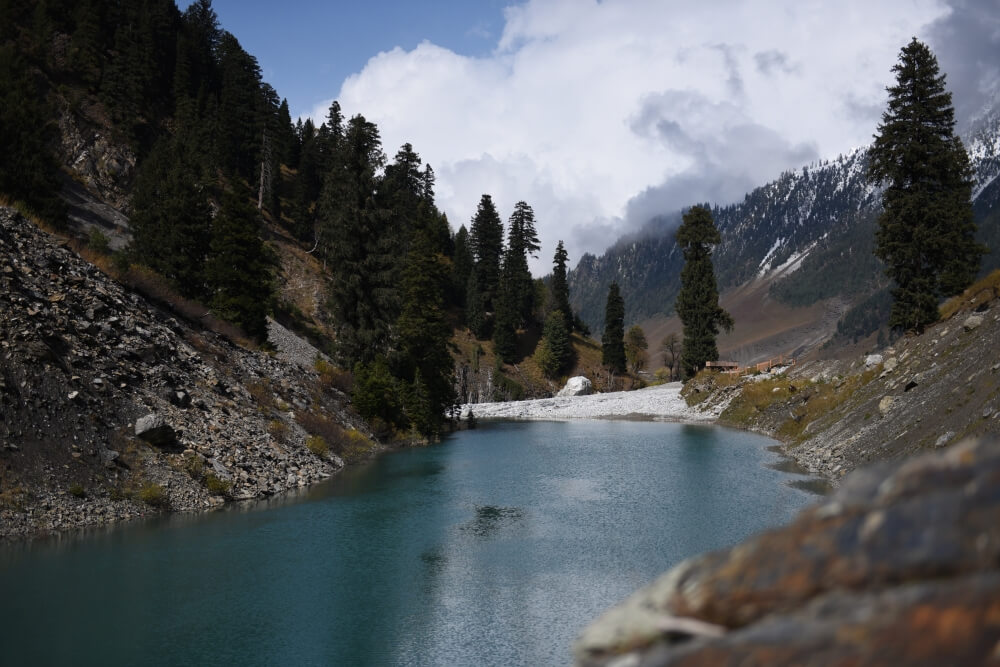
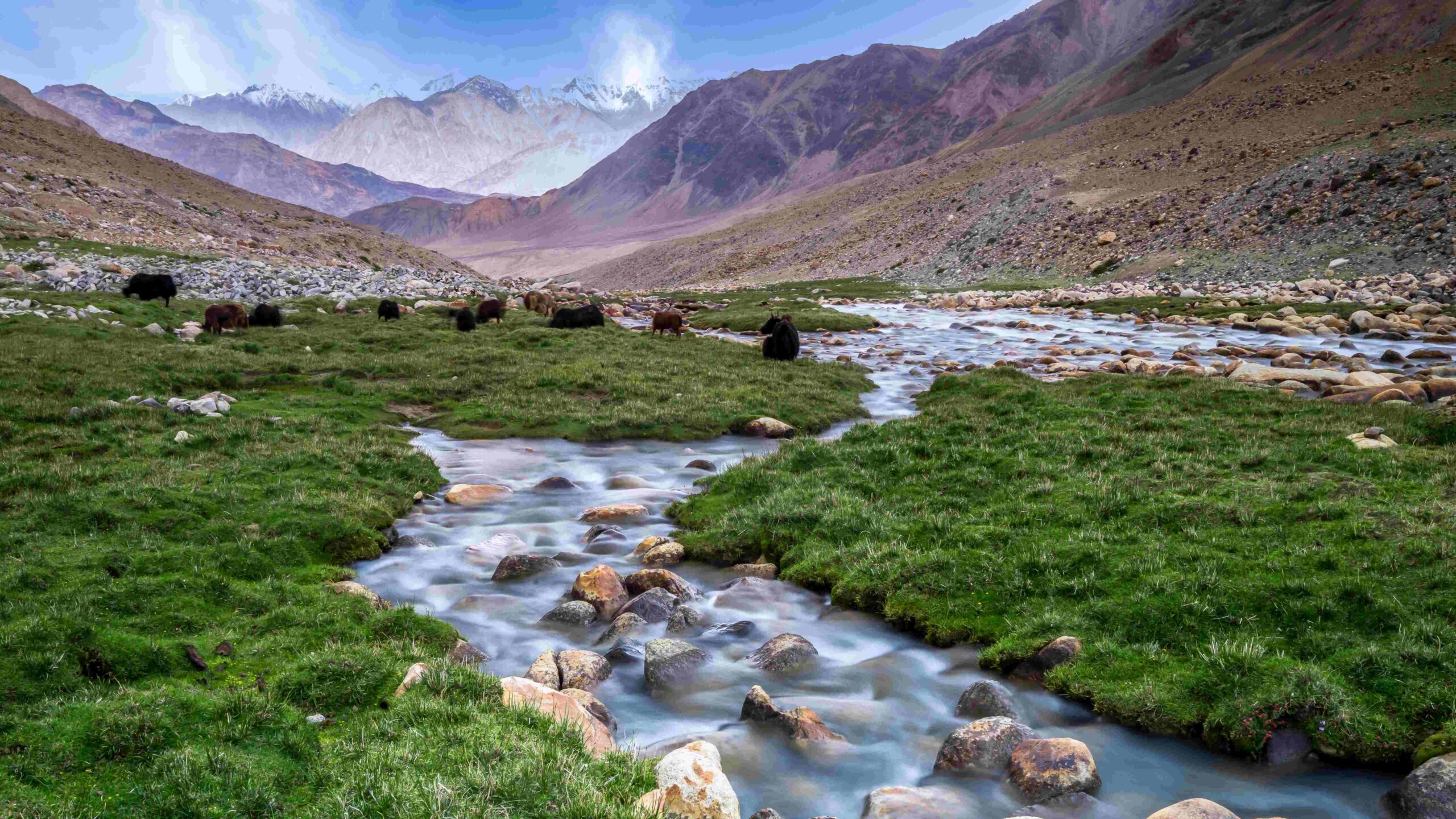
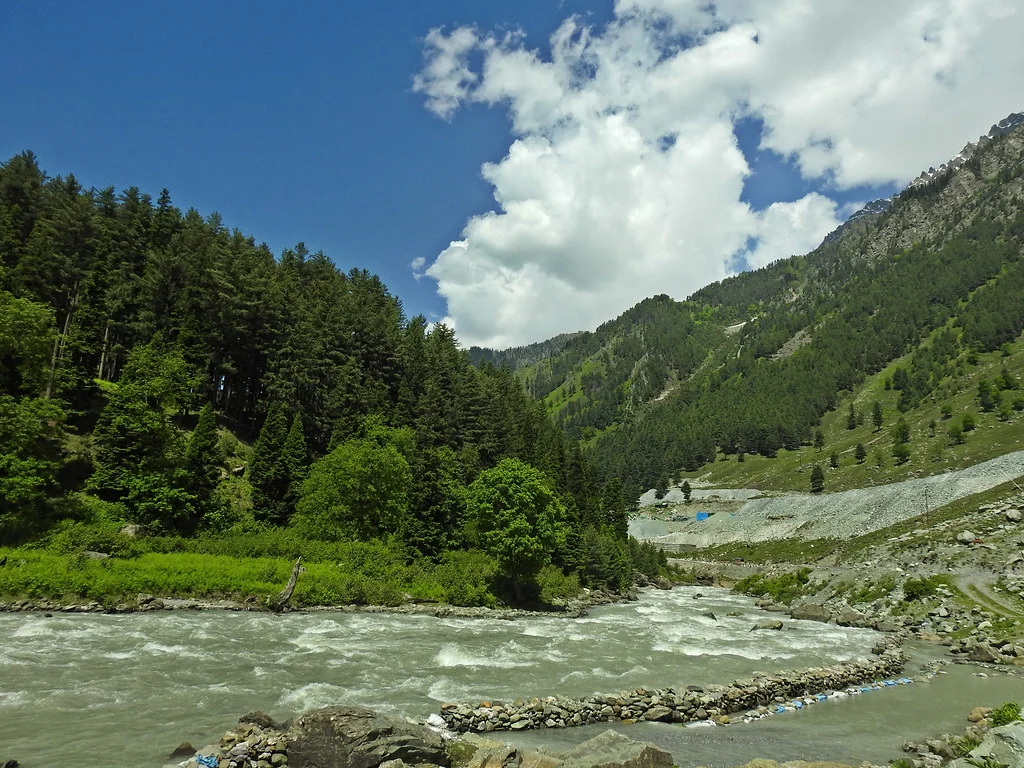
Geography and Location of Sindh Valley
Sindh Valley is located right in the midst of the Kashmir Valley. It goes through the districts of Ganderbal and Anantnag. The name of the valley is actually because of the name of the river Sindh River. The river Sindh has been one of the major tributaries for the Jhelum River; it has origins from the Himalayas. Water streams run down through the valley, curling around grasslands, alpine forests, and snow peaks. Sindh Valley is a passage, transitional, that separates the relatively more urbanized parts of Kashmir from unexplored Himalayan terrains.
The terrain of Sindh Valley is very varied. Towering mountain ranges, snow-covered most of the year, enclose the valley, and at the lower reaches, lush greenery can be seen. It is an alpine meadow, dense pine forests, and high-altitude grasslands in perfect combination. The Sindh River and its tributaries give not only scenic landscapes but also fertile lands for local agriculture, which has added to the vibrancy of this thriving ecosystem.
Cultural and Historical Importance of Sindh Valley
Kashmir had been a melting pot of cultures since different civilizations tried to make some influences on that area for thousands of years. Sindh Valley, like others in Kashmir, has much cultural treasure as ancient usages blend along with modern tints. The valley had its own history for centuries onward, when it constituted a very large portion of the Silk Route and was a trading post through which one could communicate Kashmir with Central Asia.
The valley had diverse cultures like Hindus, Buddhists, and Muslims. The time that changed religion and varied influence in culture eventually went to give shape to local traditions and culture. Scattered all over the valley across the different parts are several ancient temples and Buddhist stupas and Islamic shrines as testaments to different spiritual culture of the place.
The Naranag Temple, near Ganderbal, probably is the most important Hindu shrine in the valley. Dating back to the 8th century, it is one of the very few examples of great architecture from that period. The Sindh Valley is predominantly Muslim and, on the whole, friendly in nature. People also take great pains to preserve Kashmiri crafts, which are renowned for their quality, such as Pashmina weaving, Kashmiri carpets, and papier-mâché art.
How to Reach Sindh Valley
Sindh Valley is not that hard to reach. It is well connected to the rest of Kashmir, especially with Srinagar, which happens to be the summer capital of Jammu and Kashmir. This is how you can reach there:
By Air
The nearest airport is Sheikh-ul-Alam International Airport in Srinagar, which is 50 km from Ganderbal, the entry point to Sindh Valley. The airport is well connected to major cities across India. From Srinagar, you can hire a taxi or take a bus to reach the valley. The drive will take you through the scenic landscapes of the Kashmir Valley.
By Train
The Jammu Tawi is the main railhead to this area. While it is a far distance away to be driven into, buses or taxis available in Jammu do take tourists directly to Srinagar and eventually to the valley of Sindh.
By Road
The valley can also be accessed by road through buses, cabs, and private cars. National Highway 1A has connected Srinagar to all other places of Kashmir such as Ganderbal, Sonamarg, and so on in the Sindh Valley. The road route through the valley is really eye catching with such a beautiful view of the greenish verdant landscape and snow capped mountains.
Major Tourist Attractions of Sindh Valley
The place, Sindh Valley, is absolutely full of natural beauty, historical landmarks, and cultural heritage; any visitor is sure to be amazed. Main attractions in Sindh Valley are:
- Ganderbal Town
Ganderbal is a town that serves as the entry to Sindh Valley. It has a friendly town, refreshing ambiance and views. It is an important town of the valley, giving a perfectly authentic rural experience in real Kashmir. Near Ganderbal, the Naranag Temple is one of the historic religious Hindu sites crossed centuries and can offer some dazzling view of mountain scenery.
Apart from natural lakes, Ganderbal also has a number of man-made ones and ponds, including Manasbal Lake. It is one of the best pristine water bodies surrounded by gorgeous gardens. There one would find the blend of historical land marks, culture, and a touch of beauty.
- Manasbal Lake
Manasbal Lake is one of the most beautiful lakes in Kashmir. Situated about 30 kilometers from Srinagar, this lake is surrounded by terraced gardens, orchards, and towering mountains, offering a tranquil retreat from the busy city life. It’s a perfect destination for a serene boat ride with the peacefulness of water and grandness of landscapes around it.
Manasbal Lake also provides diversified species, which is said to be a favorite destination for many bird watchers. One can really enjoy quite many species of birds in order to watch them for migrations. Such place gives a fine picture during winter migration season.
- Wular Lake
Wular Lake is one of the largest freshwater lakes across Asia and extends to the north side of the valley of Sindh. This wetland covers 250 square kilometers of area and wetlands all around it, so it is the important wetland for the migratory birds. It is a favorite destination for the birding and photography because there are over 100 species of birds recorded in Wular Lake. It helps regulate the flow of water into Jhelum River because if heavy rain falls or the time of snow melts, it will serve as natural reservoir.
Sonamarg means literally the Persian word ‘snoi marg’ or the meadow of gold. More often however, it is used as a descriptive title for its colourful meadows, pristine glaciers and silvery ripples of Sindh River. For even though Sonamarg is a well-known tourist destination, this makes an ideal gateway for discovery of the as yet unexplored wilderness of Sindh Valley.
Sonamarg is studded with trails that go to such locations as Thajiwas Glacier, Vishansar Lake, and Krishansar Lake. Regardless of the sort of adventure a person wants-be it soft treks or extreme adventures- Sonamarg stands out as the perfect base from which to initiate all these adventures.
- Vishansar Lake and Krishansar Lake
Above of Sindh Valley there are two very small alpine lakes: Vishansar Lake, and Krishansar Lake, altitude is around 4,300 meters above sea levels, all time surrounded with mountains of snow. One of the prime trekking routes can be said that the trek through Vishansar Lake is moderately challenging because, for that trekkers require minimum good-level fitness and endurance qualities, but while trekking toward the lake there were views quite beautiful.
Krisha Nagar Lake is barely a kilometer from Vishansar Lake. In all beauty of it, Krisha Nagar is much more serene and untouched. The two lakes are meant for ideal trekking and camping to enjoy the wilderness of Kashmir.
Adventure Activities in Sindh Valley
Sindh Valley is an adventure seeker’s paradise. From trekking, river rafting, fishing, to camping, Sindh Valley has everything up its sleeve for the adventure enthusiast. Some of the best adventure activities in the region include:
- Trekking
Sindh Valley boasts some of the most scenic and challenging trekking routes in Kashmir. Popular treks in the region include:
- Thajiwas Glacier Trek: This is a relatively moderately demanding trek from Sonamarg, that takes you through the photogenic Thajiwas Glacier. The trail is perfect for beginners and the view of the mountains and valleys around is simply breathtaking.
- Vishansar Lake Trek: A tough trek, this takes you to the scintillating Vishansar Lake amidst snow-capped peaks.
- Krishansar Lake Trek: It is a beautiful trek that is more secluded and peaceful than most other popular trails.
- River Rafting
The Sindh River has many excellent stretches for white-water rafting. Its crystal-clear waters and rapid rapids present an exciting challenge to those looking forward to enjoying some water adventure.
- Fishing
The Sindh River is extremely fishy. Trout is a very common find. For fishers who may want some tranquil time while out fishing, there is no finer place to hook a few chances at catching among the most precious fish in this region. One can catch-and-release as well as traditional in the river.
- Camping
Connecting with nature is one of the things that make camping in Sindh Valley unique. There are several campsites along the river; hence you can set up your tent and spend a night beneath the shining stars. The quietness and river sounds will give a sense of peace that cannot be found elsewhere.
Best Time to Visit Sindh Valley
Depending upon what one has come to look for, summer or autumn can be the ideal time to visit Sindh Valley.
- Summer (April to June): The mercury goes from as low as 15°C to a high of 25°C. This weather is perfect to engage in sightseeing or trekking activities. When red, gold, and yellow colours make an extremely rich tapestry of the valley in autumn, photography and casual walks are easier to do.
- Winter (December to February): If you love snow, then this is the best time to visit Sindh Valley. The winter wonderland spreads its beauty throughout the landscape. One can play in the snow, ski, and snowboard.
Accommodation in Sindh Valley
Different budgets can be afforded through budget hotels, guest houses, and some of the greenest resorts of this valley, along with a camping area on the river side of the Sindh Valley. Whether lavish luxury or getting away from mainstream culture in the Sindh Valley, there is accommodation for any visitor’s comfort.
Conclusion: Why Sindh Valley is a Must-Visit Destination
No doubt, Sindh Valley is one of the most beautiful yet underrated destinations in Kashmir. With breathtaking landscapes, a rich cultural history, and all adventure activities lined up for tourists, Sindh Valley remains the most sought-after place for all nature lovers and adventure-seekers out there. And, if you look for unapproachable beauty in Kashmir, a natural serenity embracing you all the way through, then there is no question of looking beyond and ensure Sindh Valley figures at the very top of your travel list.
This valley has all of adventure, nature, and culture in one perfect blend. From the calm banks of Manasbal Lake, which can be reached after several hours of an adventurous trek, to the trek up to Vishansar Lake, this valley offers adventure, nature, and culture in a perfect blend. And with such pristine environment and warm hospitality, it is quite an experience-it will certainly linger on for a lifetime.
How to book Sindh Valley tour online?
Contact Brown Chinar at +91 6005039532/+91 9906188874 or Email us at : Enquiry@brownchinarkashmir.com

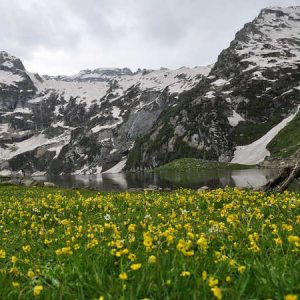

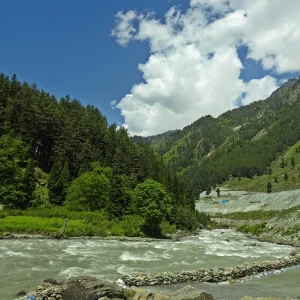
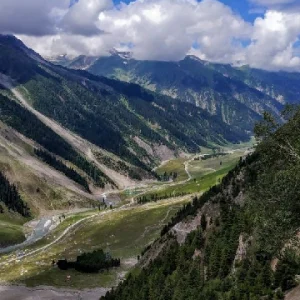
People Also Ask
What is Sindh Valley in Kashmir?
The Sindh Valley is a picturesque region in the northern part of Kashmir in India. Located along the Sindh River, the valley is known for its stunning landscapes, lush meadows, and vibrant culture. It forms part of the Kashmir Valley and is surrounded by high mountain ranges.
Where is Sindh Valley located?
Sindh Valley is situated in the Ganderbal District of Jammu and Kashmir, India. It lies to the north of Srinagar and is bounded by the Zabarwan Range and the Himalayas, with the Sindh River flowing through it.
What is the best time to visit Sindh Valley?
The best time to visit Sindh Valley is during the summer months from May to September, when the weather is pleasant and the valley is in full bloom. Autumn (October) is also a great time to visit for those who want to witness the fall foliage.
How do I reach Sindh Valley in Kashmir?
To reach Sindh Valley, you can travel to Srinagar, which is the nearest major city. From Srinagar, you can take a road trip through the Ganderbal district. Sindh Valley is about 60 kilometers from Srinagar by road.
What are the major attractions in Sindh Valley?
Some key attractions in Sindh Valley include:
- Sonamarg: A popular tourist destination known for its meadows, glaciers, and trekking opportunities.
- Thajiwas Glacier: Located near Sonamarg, offering stunning views and a great trekking experience.
- Krishansar Lake and Vishansar Lake: Beautiful high-altitude lakes, perfect for trekkers.
- Gadsar Lake: A serene alpine lake surrounded by snow-capped peaks.
What is Sonamarg?
Sonamarg is the main town in Sindh Valley, situated at an altitude of about 2,740 meters (8,990 feet). Known for its meadows, snow-covered peaks, and crystal-clear streams, it is a popular base for tourists visiting Sindh Valley.
Is Sindh Valley a good place for trekking?
Yes, Sindh Valley is one of the best regions in Kashmir for trekking. Some famous treks include:
- The Sonamarg to Thajiwas Glacier Trek
- Krishansar and Vishansar Lake Trek
- The Gadsar Pass Trek
These treks offer magnificent views of alpine lakes, glaciers, and meadows.
How far is Sindh Valley from Srinagar?
Sindh Valley is located around 60 kilometers (37 miles) from Srinagar, and it takes about 2-3 hours to reach by road. The scenic journey through the valley adds to the charm of the trip.
What activities can I do in Sindh Valley?
Visitors to Sindh Valley can engage in a variety of activities:
- Trekking: Several trekking routes lead through the valley’s stunning landscapes.
- Camping: Camp in the meadows near Sonamarg for an immersive experience.
- Fishing: The Sindh River is known for trout fishing.
- Horse Riding: Ride horses through the lush meadows and explore the valley.
- Photography: Capture the breathtaking beauty of the valley.
What is the Sindh River?
The Sindh River is a major tributary of the Jhelum River that flows through the Sindh Valley. It originates from the Gadsar Lake and is known for its crystal-clear water, trout fishing, and picturesque views.
Is Sindh Valley safe for tourists?
Yes, Sindh Valley is generally safe for tourists. However, travelers should take common precautions such as checking weather conditions, traveling with a local guide, and ensuring safety during treks.
What is the weather like in Sindh Valley?
The weather in Sindh Valley is typically cool and temperate, with summers being mild and winters cold, with heavy snowfall. Temperatures can drop significantly during the winter months, making it a perfect destination for snow lovers.
Can I camp in Sindh Valley?
Yes, camping is a popular activity in Sindh Valley, particularly in areas like Sonamarg. Tourists can enjoy a peaceful stay under the stars in the meadows, surrounded by snow-capped peaks.
Are there any hotels in Sindh Valley?
Yes, there are several guesthouses, hotels, and tourist huts in Sonamarg and nearby areas that provide basic accommodations for tourists. During peak tourist season, it’s advisable to book accommodations in advance.
What is the Gadsar Lake Trek?
The Gadsar Lake Trek is one of the most scenic treks in Sindh Valley, leading to Gadsar Lake—an alpine lake located at an altitude of around 4,000 meters (13,123 feet). This trek offers stunning views of glaciers, meadows, and snow-covered peaks.
How long does it take to trek to Thajiwas Glacier?
The Thajiwas Glacier trek typically takes about 4-6 hours to complete from Sonamarg, covering a distance of approximately 7 kilometers (4.3 miles). It is a relatively easy trek, suitable for beginners.
What is the Sonamarg to Krishansar Lake Trek?
The Sonamarg to Krishansar Lake Trek is a popular high-altitude trek in the Sindh Valley region. The trek takes around 6 days to complete and offers spectacular views of the pristine lake and surrounding peaks.
Can I visit Sindh Valley in winter?
Yes, Sindh Valley can be visited in winter for snow sports and scenic winter landscapes, especially if you enjoy snow-covered views and skiing. However, some treks may be inaccessible due to snow and road closures.
What is the culture of Sindh Valley?
The culture of Sindh Valley is deeply influenced by Kashmiri traditions. The people of the valley speak Kashmiri and follow Islam as their primary religion, although there is a significant Hindu presence in some areas. Local handicrafts, music, and cuisine are also an integral part of the cultural experience.
Are there any temples or religious sites in Sindh Valley?
Yes, Sindh Valley is home to several important religious sites, including:
- The Gadsar Temple: A Hindu temple located near Gadsar Lake.
- The Sufi Shrines: There are several Sufi shrines in and around Sonamarg, reflecting the region’s rich Islamic heritage.
What is the best way to explore Sindh Valley?
The best way to explore Sindh Valley is by road, either with your own vehicle or through local taxis. For trekkers, guided treks are the best option to safely navigate the mountainous terrain and experience the scenic beauty of the region.
What wildlife can be found in Sindh Valley?
Sindh Valley is home to a diverse range of wildlife, including:
- Himalayan brown bears
- Snow leopards
- Musk deer
- Hangul (Kashmir stag)
- Monal pheasants
The region is also known for its rich birdlife and flora.
Is Sindh Valley a good place for fishing?
Yes, Sindh Valley is renowned for trout fishing. The Sindh River and Krishansar Lake are popular spots for anglers looking to catch trout and other freshwater fish.
How can I get a permit to visit Sindh Valley?
While most parts of Sindh Valley do not require permits for domestic tourists, some areas near the border regions or certain trekking routes may require a protected area permit. It’s advisable to check with local authorities or tour operators before traveling.
What are the local foods to try in Sindh Valley?
In Sindh Valley, you can try authentic Kashmiri dishes, such as:
- Rogan Josh: A flavorful lamb curry.
- Yakhni: A yogurt-based meat dish.
- Kashmiri Pulao: A rice dish cooked with saffron, dry fruits, and meat.
- Kahwa: A traditional Kashmiri green tea flavored with spices and saffron.
